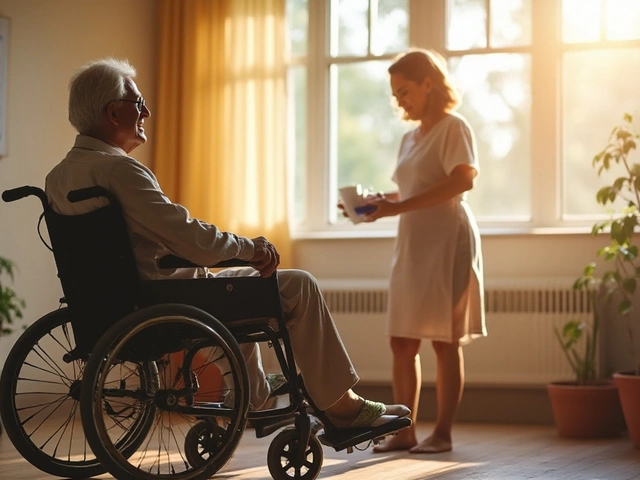Understanding Orthopedic Pain and How to Find Relief
When your knees, hips, or back start hurting, you’re dealing with orthopedic pain. It’s the kind of ache that pops up after a fall, a long walk, or even just sitting wrong at a desk. Unlike headaches or stomach upset, orthopedic pain comes from bones, joints, muscles, or ligaments that are stressed or injured.
First‑time visitors often wonder why the pain feels so different from a typical muscle sore. The answer lies in the nerves that surround joints and bones; they send stronger signals when the structure is damaged. That’s why a simple twist can leave you wincing for days, while a sore throat fades faster.
Common Sources of Orthopedic Pain
Most people experience pain in one of three areas: the knee, the lower back, or the shoulder. Knee pain often follows sports injuries, arthritis, or a sudden impact. Lower back pain can be the result of bad posture, heavy lifting, or a slipped disc. Shoulder pain usually shows up after over‑use, like lifting heavy boxes repeatedly, or from rotator cuff issues.
Other frequent culprits include osteoporosis‑related fractures, plantar fasciitis in the feet, and tendonitis in the elbows. If you notice swelling, reduced movement, or a sharp stabbing feeling, it’s a good idea to see a doctor. Early diagnosis can keep a small problem from turning into a chronic condition.
Practical Ways to Ease Orthopedic Pain
While you’re waiting for a medical appointment, there are a few things you can try at home. Ice packs applied for 15‑20 minutes a few times a day reduce inflammation in the first 48 hours after an injury. After that, switch to heat to relax tight muscles and improve blood flow.
Gentle movement beats complete rest. Simple stretches—like touching your toes or rotating your shoulders—keep joints from stiffening. If a movement makes the pain flare up, stop and try a lower‑impact activity such as swimming or cycling.
Over‑the‑counter painkillers like ibuprofen or acetaminophen can help, but don’t rely on them forever. Pair meds with a supportive brace or compression sleeve if you’re dealing with a specific joint. Proper footwear, especially shoes with good arch support, can also lessen knee and hip strain.
Nutrition plays a silent role, too. Foods rich in calcium, vitamin D, and omega‑3 fatty acids support bone health and can lower inflammation. Think dairy, leafy greens, fish, and nuts. Staying hydrated helps maintain cartilage flexibility, so aim for at least eight glasses of water a day.
If your pain persists beyond a couple of weeks, consider a physical therapist. They’ll teach you targeted exercises that strengthen the muscles around the joint, which often takes the pressure off the injured area. In some cases, doctors may suggest injections or minimally invasive procedures, but those are usually last‑resort options.
Bottom line: orthopedic pain is a signal that something in your musculoskeletal system needs attention. Listen to it, use ice or heat, keep moving within comfort limits, and don’t skip professional help when it’s needed. With the right approach, most people can get back to daily activities without living in constant discomfort.

Most Painful Bone to Break: Beyond the Obvious
Breaking a bone is no walk in the park, but some can hurt more than others. Discover which bone tops the list for pain, why it hurts so much, and what you can do to manage it. Understanding the healing process can make a huge difference in your recovery. Learn tips and facts to prepare or help someone through this challenging experience.

Legit Online Pharmacies: How to Spot the Real Deal
Mar, 17 2025



